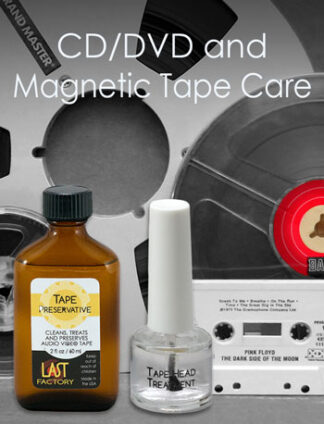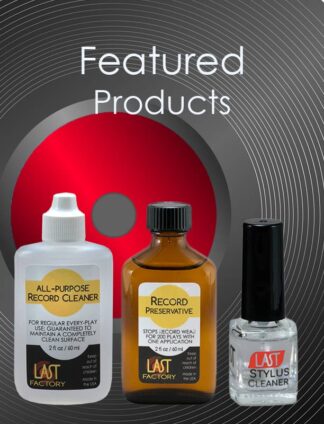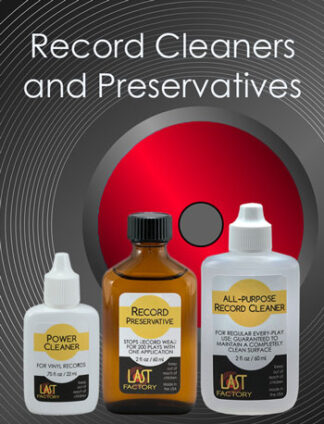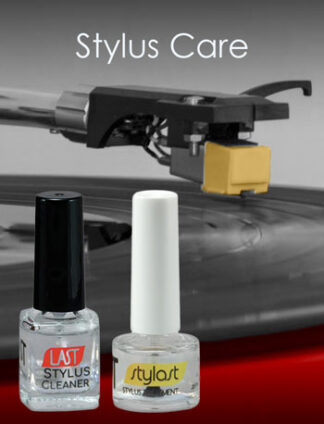First I should say hello again. For a few years I’ve been getting my 16 oz. bottles of LAST Record Preservative from Music Direct in Chicago where it gets to me in 2 days. The exception being a few months ago when you had a brief sale and I got another one even though I had plenty still here. Next I should explain just where I am with old and new vinyl. I have been a nearly fanatical collector of Classical vinyl all my life. My meticulously cared for collection now stands at 8,630 gems gathered over 55 or so years. It has been formally accepted by the Library of Congress. (Note one may not just leave something to the LOC. You must have the formal acceptance letter from the Acquisitions Dept.)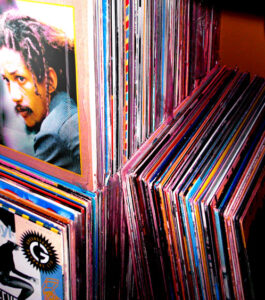
Dear Art,
I am pretty convinced that I understand most of the hibernating crud problem. There are some unknowns, and some un-knowables that are part and parcel of the problem. And some answers come from 40 year old personal history.
Early in the life of the company, I was invited to make a presentation to a Meeting of a Southern California Society of Collectors. As part of the event, attendees were expected to visit the pressing plant for Capitol Records. It was a good gathering with sometimes spotty quality, but some robust papers were delivered and read in session. For myself, the entire event was paid for with the experience of visiting the record pressing plant and the knowledge gained there.
The plant was a re-purposed aircraft assembly structure. A huge open floor with areas marked off for different activities and functions.
The only “Clean Room” in this facility was a relatively small, covered, and walled of area where finished records were checked by hand and inserted into sleeves and envelopes. I mention this because the meeting was held in the summer in Los Angeles, and if the day became very warm, the huge doors on each end of the building were opened to allow cool breezes (and attendant DUST) to swirl into the work space. There were 4 or 5 fairly long rows of record pressing machines, each row having an operator that moved from one machine to the next one to extract a just-pressed record from the faces of the press, and placed it on a vertical spindle to allow the record to cool and maintain relative flatness. The cold water that was cooling the press faces was turned off and steam was admitted, heating the press faces for the next work piece.
A stream of vinyl pellets is fed into a heated auger along with a dollop of magic sauce. And this is the source of most of the problems that you are experiencing. Record producers were using different grades and qualities of vinyl. In general, European and Japanese plants used better grades and didn’t try to push production levels beyond what could be expected from the materials and technology available. One of the problems of the “Magic Sauce” (often a form or grade of Silicon lubricant) was that it was a proprietary secret, not to be disclosed to other firms. The auger produces a large biscuit sized puck of molten vinyl mixed with the “MS”. That puck is placed in the center of the press and hydraulic pressure (upwards of 70,000 #/square inch) is applied to close the press. The purpose of the MS was to insure two conditions, 1. a smooth continuous flow of heated vinyl from the center all the way to the outer edge of the press faces, with no bubbles, no voids, no cavities. AND, 2. an absolutely clean release from the stamper when the press is opened. No drips, drops, or leavings of any kind to screw up the next record, or 10 records!!!! BUT, before the press is opened (still at high clamping pressure), cold water is flushed in to cool the press and the work piece (the record). The record is frozen into its final state while still under pressure, meaning those internal lubricants are locked into microscopic cavities in the vinyl under pressure. (Not the very high clamping pressure, but still higher than ambient.)
I think that microscopic quantities of the Magic Sauce are escaping the confines of the vinyl body and creating the conditions for your anguish.
The records can and may be cleaned as you are doing. I would like to offer a suggestion of what I think, may be (ultimately) a solution with a longer reach (and possible) one that could expose and eliminate currently undiscovered new sites. We do not have an Audio Desk System Ultrasonic Record Cleaner, however I have received very good reports about how thoroughly and effectively they perform. I think the U.S. Distributor is ultra@UltraSystem.com Tel: (215) 862-6570 They should be able to steer you in the direction of any Dealer in the NJ/NY area that is relatively close to you. A cleaning operation on a couple of records should very quickly point to a solution (if Ultra-sonic cleaning offers one).
I realize this is a very long answer to your question. I also think that your question and attendant problem are entirely worthy of my response. Please keep me informed about any progress (or lack thereof).
With Warmest Regards,
Walter
Reply
Walter,
Some time ago we spoke about this and you opined that it was likely from the oil used in the pressing process eventually working itself out and into the grooves and forming dry particles that crunched like the devil when passed by the stylus. It really is the only plausible answer.
Again, yesterday I played an old EMI pressing bought new and flawless years ago. Yesterday the crud was present in spots. I saturated part of a soft lady’s powder puff with my LAST Power Cleaner liquid and gently scrubbed the grooves in the correct way. And to my delight, the crud disappeared as we suspected it would.
In the future I plan to do this with my stiffer applicator for the Power Cleaner and I bet it will do an even better job because of the brush’s bristles greater stiffness than the powder puff. Never a dull moment for the vinyl lover.
I wanted to say thanks again, and to hear what you think about this process. It really worked this time with no adverse effect.
Best regards and thanks,
A. H. (Classical Vinyl extreme lover)


